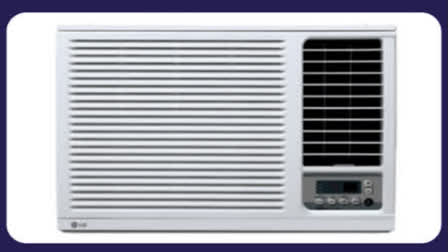Canberra:Despite so many people having air conditioning at home now, many are still unsure how to use it efficiently. And air conditioning uses a lot of energy. For example, running all the lights in an average home all day and night consumes about the same energy as one hour of air conditioning of the same space.
Many people think they can save money and energy by just blasting the air conditioning at a very low temperature, such as 17C, for a short period of time to chill the room before switching it off and enjoying the chilled air until another blast is needed later on. But it requires a lot of energy to get a room to a very chilly temperature.
While running it briefly and intermittently at a very cool temperature may feel thrifty, it won't be the most energy efficient choice. Here's what to do instead.
Start by reducing how hot your home gets
First, try to minimise the need for air conditioning. Look for ways to stop your house getting hot in the first place.
Heat can come in from outside through surfaces such as walls, windows, and ceilings. Hot air can creep in under doors or through open windows and vents. Appliances and people inside can also generate heat (although the heat impact of people is generally relatively small, unless there's a large group).
- To reduce some of this heat, you can:
- close blinds and windows before it starts getting hot
- use draft stoppers around external doors to stop hot air wafting inside
- plant trees (deciduous trees will let sunlight through in winter)
- install external shading, particularly on north and western aspects of your house
- improving ceiling and wall insulation, window glazing and sealing (if time and budget allow)
- reduce use of the oven and cooktop on very hot days (more efficient appliances, however, reduce this heating effect and save energy).
Rooftop solar systems provide a dual benefit of adding shade on the roof to stop heat coming in that way, as well as offsetting power usage. If you're in a double storey house, the lower level can be a few degrees cooler; it can help just to hang out downstairs on a very hot day.
Set your air conditioning to the highest level that's comfortable
Turning our attention to the air conditioning unit itself, the most energy efficient action is to set the temperature to the highest value that's still comfortable (26C during the day and 22C when sleeping is often recommended). Then, just let it run. Modern units (that feature technology known as an inverter) will adjust their output efficiently to maintain the indoor temperature at the setting you've chosen.
Be careful, however; setting the temperature too low can result in the unit using more power than you think it's using (based on star rating label). Older non-inverter units will cycle on and off to maintain the temperature, and you will generally be able to hear and feel it going on and off. (The newer inverter units, by contrast, don't tend to cycle on and off as much; they usually just stay on and continuously modulate their output).
